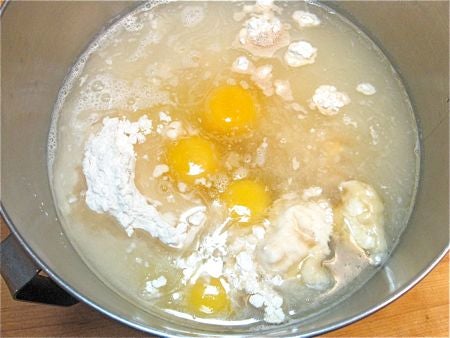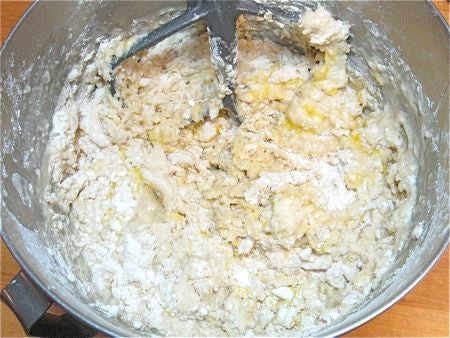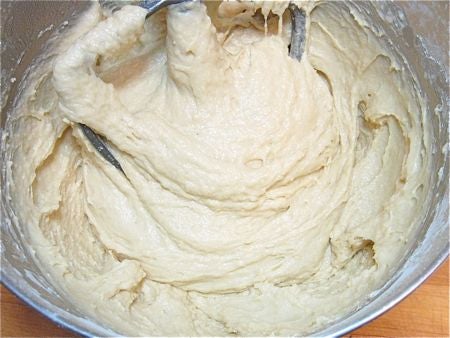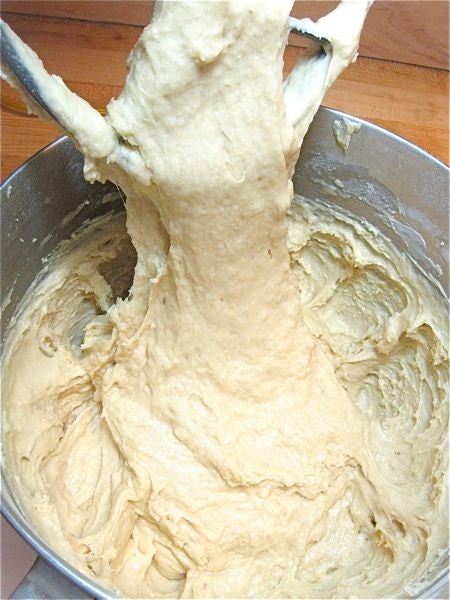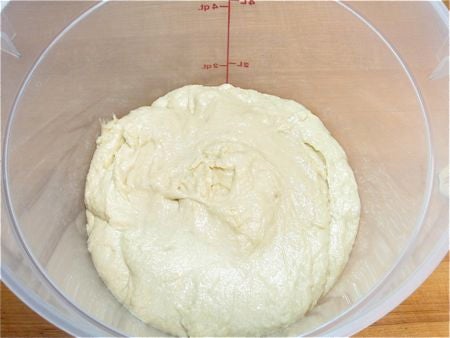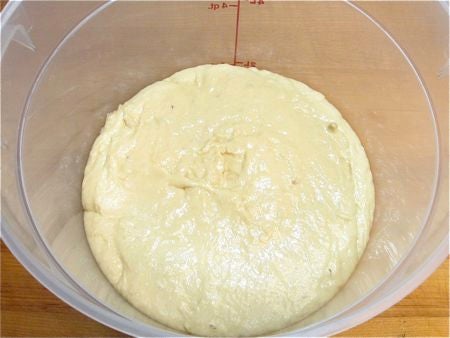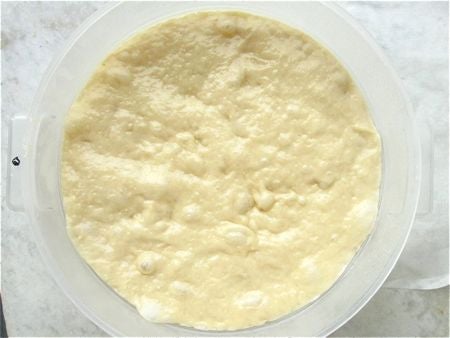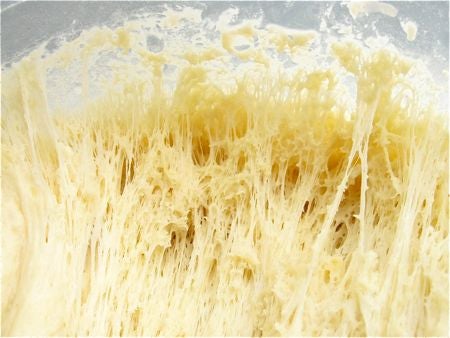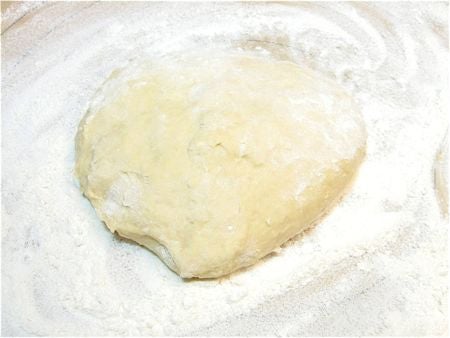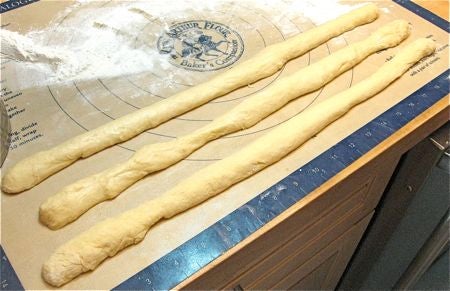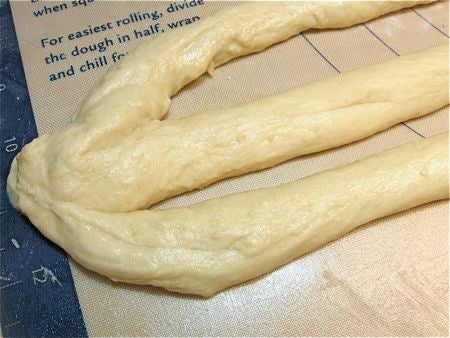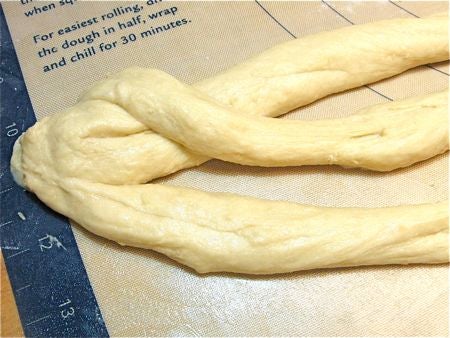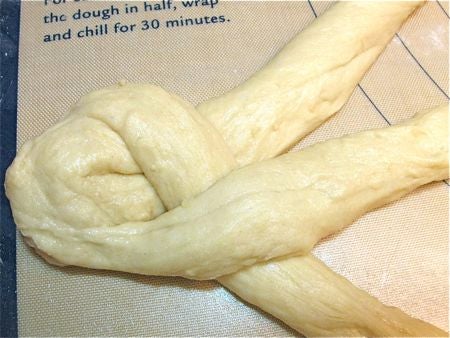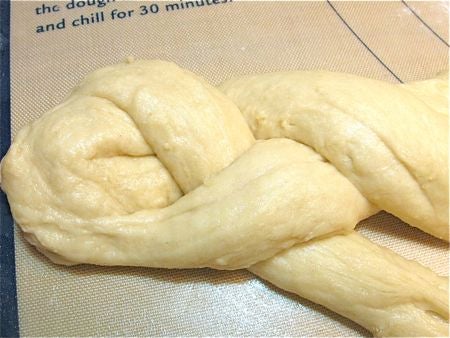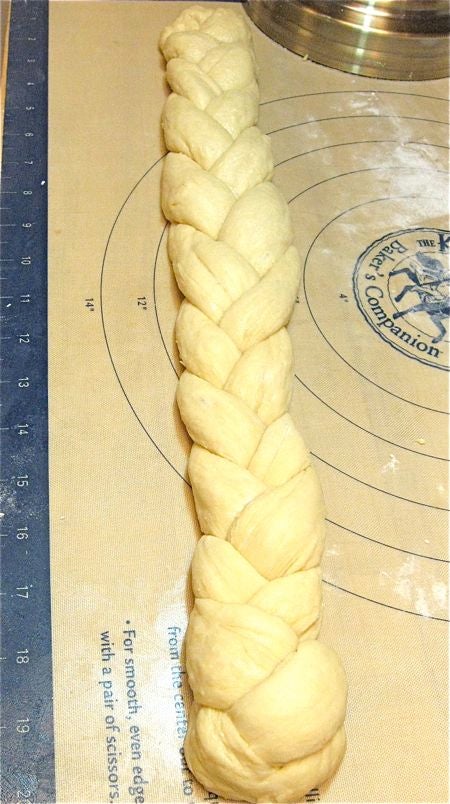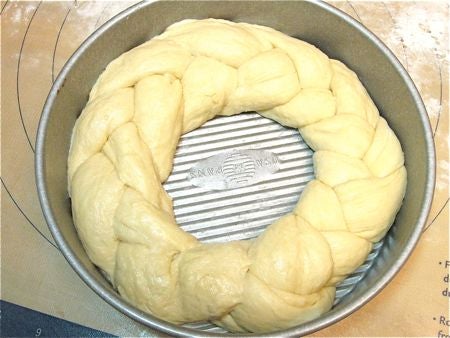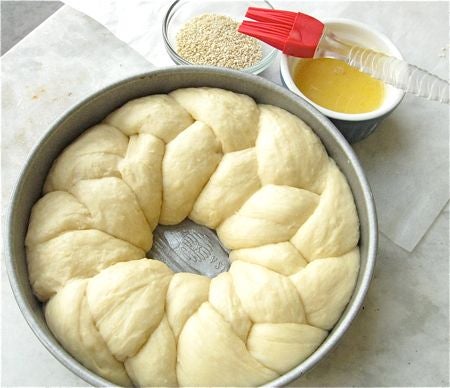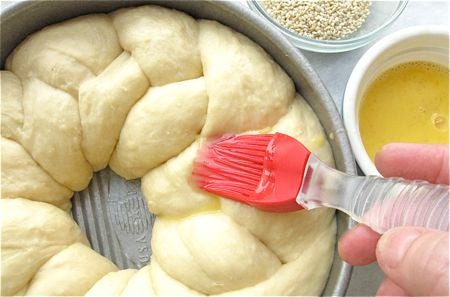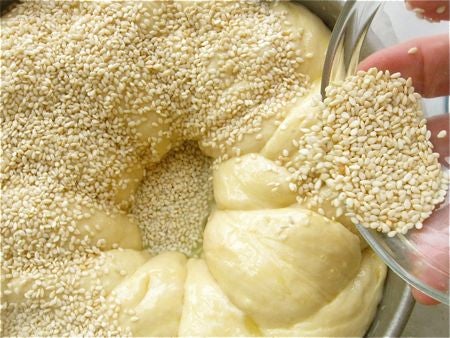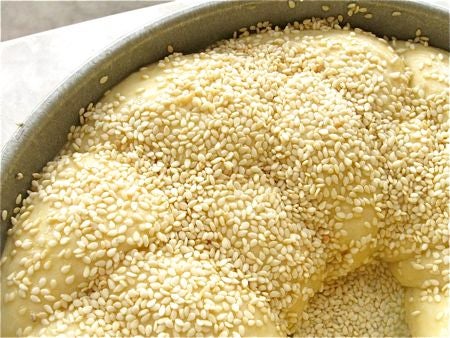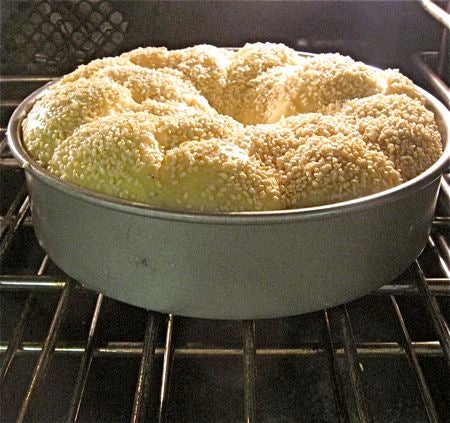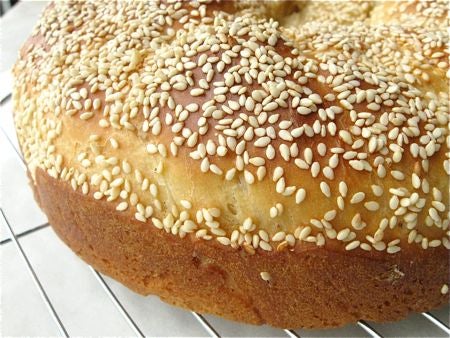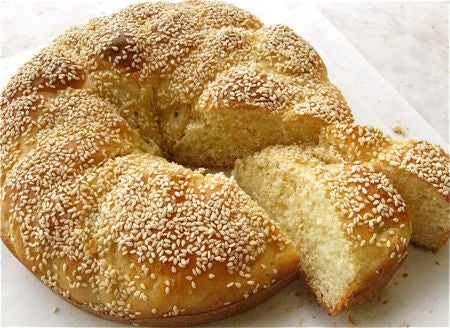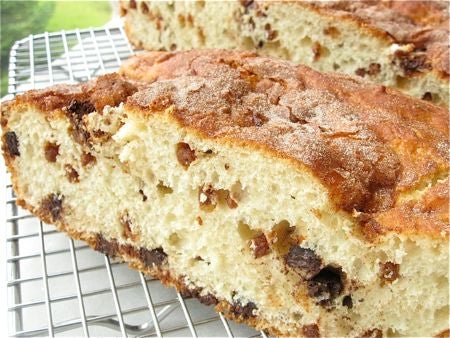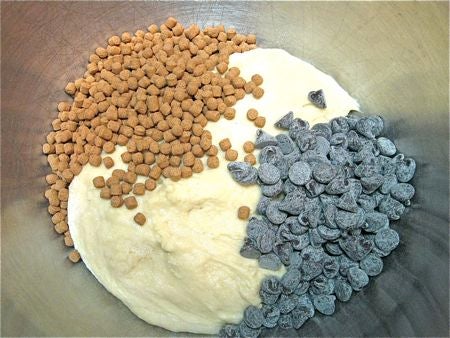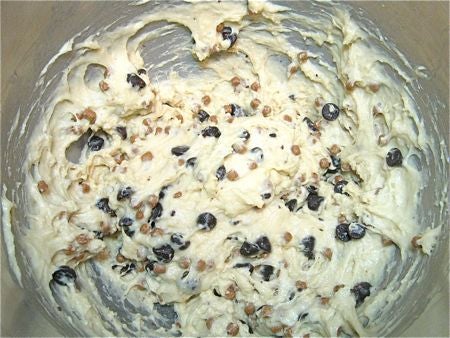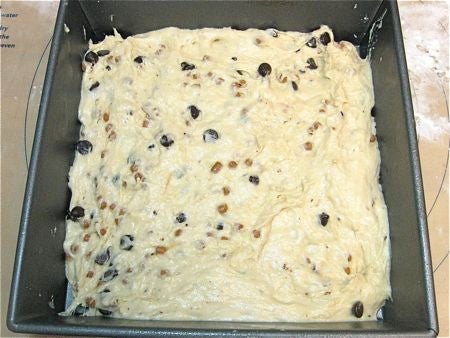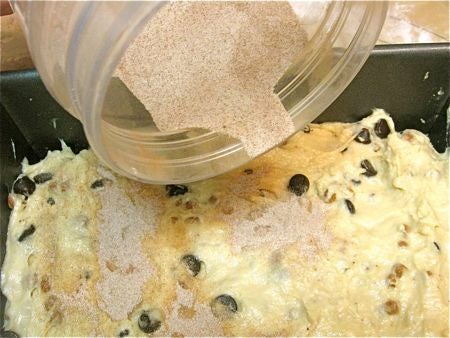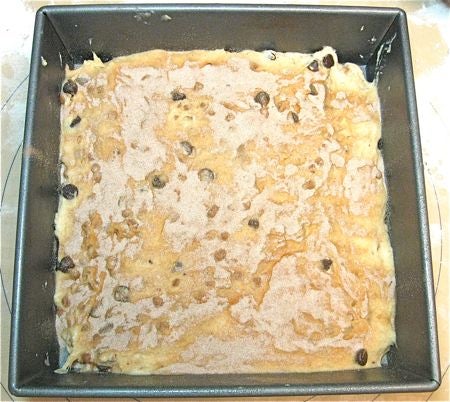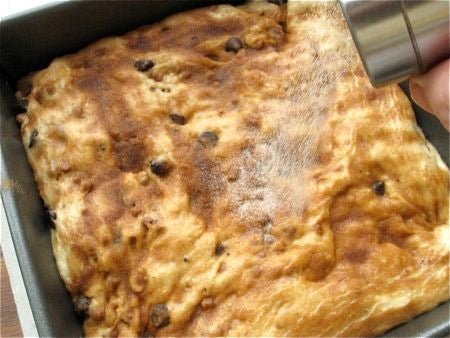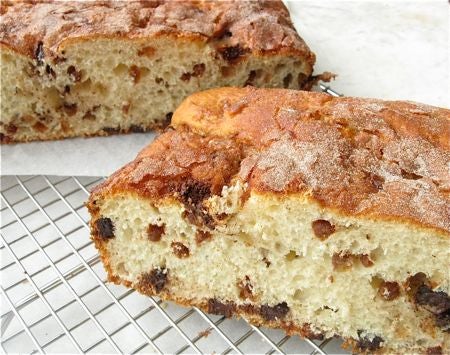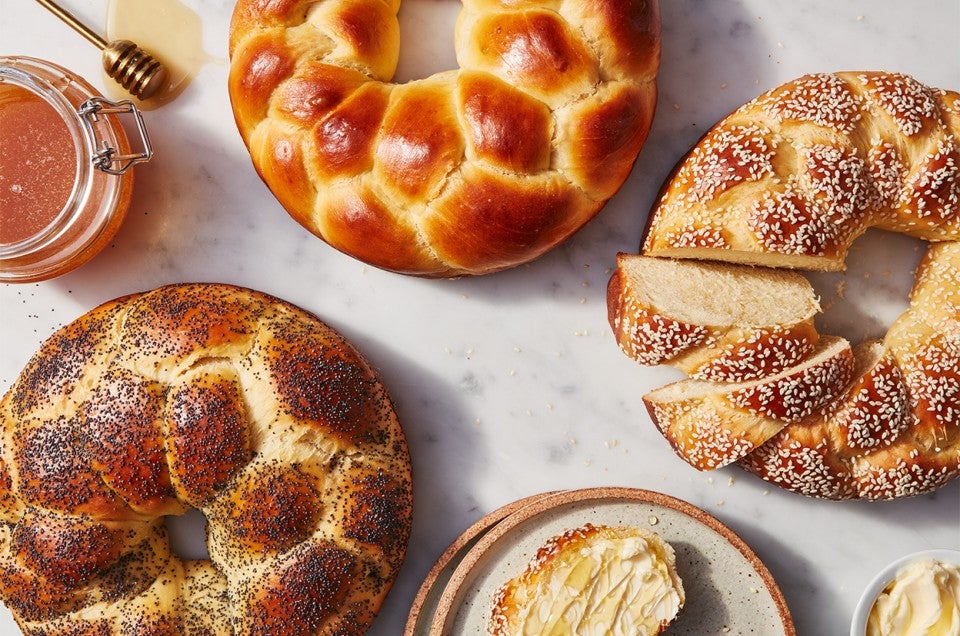


At the risk of sounding like a broken record, I have to tell you again:
I'm LOVING no-knead breads.
Baguettes, sticky buns, pizza crust, crusty-chewy bread, a harvest loaf to die for – these are just a few of the recipes we've perfected in the past couple of years.
And the list just keeps on growing. No-knead challah – who knew?
The New York Times started the whole thing 3 years ago, printing a recipe from Jim Lahey of Manhattan's Sullivan Street Bakery. Lahey's recipe was simple enough: flour, water, yeast, and salt. But it was his method that took the baking world by storm: “Stir until blended.”
What – no kneading? Indeed, not only was the dough not kneaded, it wasn't shaped, either. The sticky blob was basically allowed to rise, then plopped into a hot pot, covered, and baked.
The result? Chewy-crusty bread. Bread that makes you wonder how flour and water and salt and yeast could possibly taste so good.
Home bakers have jumped on the no-knead bandwagon in droves. And we've experimented with the technique a lot. It makes sense; if you simply let your dough rise long enough (18 hours at room temperature; up to a week in the fridge), the gluten actually develops itself; there's no need to knead. Truly.
We've used Jeff Hertzberg and Zoë François’ wonderful book, “Artisan Bread in Five Minutes a Day,” as a jumping-off place for our recent no-knead efforts. The following is a spin on one of their recipes – and a new take on one of our favorite egg-rich, tender breads: challah.
This is a no-knead dough – all you do is mix it up. Combine 810g King Arthur Unbleached All-Purpose Flour, 1 tablespoon + 1/2 teaspoon of salt, 1 1/2 tablespoons instant yeast, 1 1/2 cups (340g) lukewarm water, 4 large eggs, 1/2 cup (170g) honey, and 1/2 cup vegetable oil (99g) or melted butter (113g).
Why do we specify 810g of flour? Because the flour/liquid ratio is key here. If you're measuring by volume, it's important to measure the King Arthur way: Fluff your flour in the canister, sprinkle it into your measuring cup, then level it off.
Hey, kids – take a look at our video on how to measure flour. We're hoping for an Oscar nomination –Best Live Action Short Film. We'll be walking the red carpet next February.
Mix to combine.
Then mix at high speed for 1 minute. Everything should smooth out pretty nicely.
Notice how just that short, fast mix develops the flour's gluten.
Grease a 6-quart dough-rising bucket or big bowl. Scoop the dough into the container. Cover the container, and let the dough rise at room temperature for 2 hours.
As you can see, it'll rise a bit, but not much. So, why did I need such a big bucket?
Take a look at how much the dough has risen after an overnight rest in the refrigerator. Common fallacy: yeast needs warmth to grow.
And look at that gluten - beautiful!
Scoop out 1/3 of the dough – that's about 21 ounces. Plop it onto a well-floured work surface.
Divide the dough into three pieces, and roll each piece into a 24” rope. As you first begin to roll, you'll need the flour. But once the sticky dough has absorbed a bit of the flour, you can clean your work surface, spray it with a bit of non-stick vegetable oil spray, and work there.
Now we're going to make a braid. If you already know how to do a three-strand braid, you can ignore the following pictures. If you've never braided your daughter's hair, read on...
First, pinch the three ends together.
Bring one of the outer ropes over the center rope.
Bring the opposite outer rope over the “new” inner rope (which used to be the outer rope). Get it?
Repeat, switching from side to side and always bringing an outside rope over the center rope.
Whoa, baby – that's a long, skinny braid! Actually, it'll be about 15” long, more or less.
Grease an 8" cake pan that's at least 2” deep. If your 8” cake pan isn't at least 2” deep, use a 9” cake pan. Coil the braid into the pan.
Cover the pan, and allow the dough to rise for about 90 minutes. Towards the end of the rising time, preheat your oven to 350°F.
It'll become quite puffy. Notice the hole in the center is starting to disappear; that's OK.
Beat 1 egg with 1 tablespoon cold water. Ready 3 tablespoons sesame or poppy seeds, if you like.
Gently brush the risen loaf with the beaten egg...
...and sprinkle heavily with the sesame seeds.
Yes, heavily. As the bread rises in the oven, the space between the seeds will expand. If you don't use enough seeds right up front, they'll look sparse once the bread is baked.
See why you need to use a 2”-deep pan? Nice oven spring!
Bake the bread for 30 to 35 minutes, till it's golden brown.
Remove the challah from the oven, and turn it out of the pan onto a rack.
To avoid a shower of seeds all over the counter, turn the pan upside-down onto a damp dish towel. Remove the pan, and turn the challah right-side up. Place it on the rack; then simply shake the towel outside. The birds will love those sesame seeds!
Cut in wedges to serve.
Now, what should you do with the remaining 2/3 of the dough? The whole recipe will make three challahs. But if you're all challah-ed out, try this:
An easy, off-the-cuff coffeecake.
Add 1/2 (85g) to 2/3 cup (113g) each chocolate chips and cinnamon chips to the remaining dough.
Mix till combined.
If you have 1/3 of the dough left, pat it into a greased 9” x 9” pan. Two-thirds left, pat it into a 9” x 13” pan.
Sprinkle heavily with cinnamon-sugar.
Let rise for 90 minutes or so...
...then sprinkle with additional cinnamon-sugar.
Bake in a 350°F oven for 25 to 30 minutes, until the dough springs back nicely when you press it, and a cake tester inserted into the center comes out clean. Remove it from the oven, turn it out of the pan, and serve warm.
As you can see, this is a good, easy, all-purpose sweet dough. What else can you do with it? Let me know. I'm thinking Pizza Hut Chocolate Dunkers...
Read, rate, and review (please!) our recipe for No-Knead Challah.
Note: Due to the insufficient amount of flour, this recipe does not fulfill the mitzvah of Hafrashat Challah.


